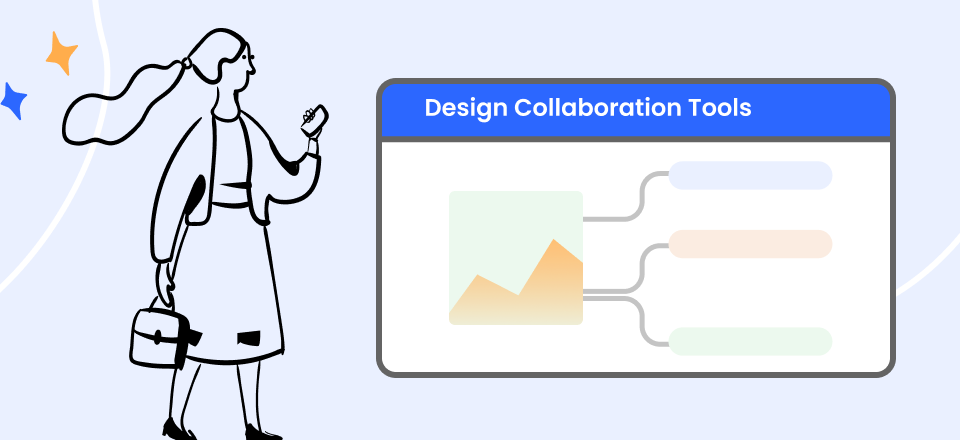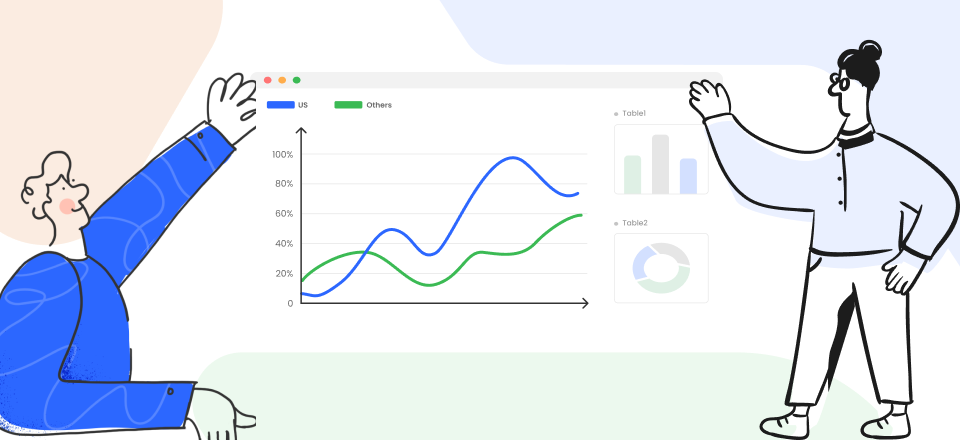If you haven’t been conducting an agile retrospective, or if your sprint retros are unproductive and give your team the impression that nothing in your agile approach ever changes, you may want to think about making use of a creative Agile Retrospective Template that was built with your requirement in mind.
However, due to the many Agile retrospective templates in the market such as Agile roadmap templates, finding the one with your needs and perspectives is not easy. However, don’t worry because here, we’ve reviewed the finest agile retrospective templates, what it means, and why you need them to give you a proper idea. Let’s get going!
Table of Contents: hide
What Is Agile Retrospective Template?
What Is Agile Retrospective Template?
What Is Agile Retrospective Template?
An Agile Retrospective Template provides a structure for teams to reflect on and evaluate their most recent work processes to discover growth opportunities and develop strategies for achieving that growth. The Agile approach, which stresses the value of continuous improvement and responsiveness to change, relies heavily on the retrospective.
Agile retrospectives may be organized in many ways but have common elements. Teams often debrief after each iteration or sprint to discuss what worked, what didn’t, and how to use productivity tools to boost work performance. Spaces for documenting insights, task management, and follow-up plans, as well as possible prompts or questions to encourage the team’s conversation, may be included in the template. Using a template, the team can make sure they cover all the bases and develop a concrete strategy to enhance their workflow.
Why Do I Need a Retrospective Template?
There are several advantages to using an Agile Retrospective Template. First, it offers a systematic and orderly approach to looking back. By sticking to a set format, the team can be sure to address all key points and leave nothing out. In the long term, this may improve efficiency and production by decreasing the likelihood that possible issues will be missed and not addressed. In addition, the template can boost team spirit and get everyone involved, guaranteeing that their ideas and opinions will be given equal weight.
Improved team communication and team cooperation are other benefits of using a retrospective template. Team members can better comprehend each other’s roles and duties and any hurdles they may be encountering by reflecting on their previous work processes and finding areas for improvement. Due to this, team members feel more comfortable speaking out and offering their input, contributing to an atmosphere of openness and responsibility. In the end, this might lead to improved teamwork and communication, which would benefit the project.
Top 6 Agile Retrospective Template Worth Trying
Looking for the best agile retrospective templates for your project? You’ll get them here! Conducting a retrospective of your on-going project and team is essential to understand what’s on your plate and who’s responsible for what part. It helps project managers see how the team works and where they stand in the Agile technique. And to conduct it properly, you need a proper agile retrospective template, which we’ve listed below:
Facilitating Agile Retrospectives Workshop
Teams may enhance their methods, routines, culture, and output with Miro’s Facilitating Agile Retrospectives Workshop. The lack of a physical meeting place could reduce the effectiveness of retrospectives and negatively influence collaboration for distributed teams. This pre-made workshop, on the other hand, will allow you to learn by doing and acquire real-world expertise. With this template, teams can easily view their requirements, previous mistakes, and where they stand.
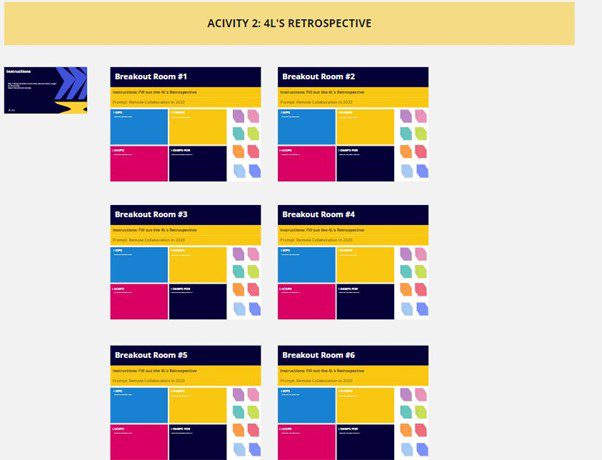
Facilitating Agile Retrospectives Workshop
Facilitating Agile Retrospectives Workshop’s Pros
- Three techniques for eliciting specific, useful feedback from team members are provided.
- Facilitates hands-on experience with newly learned methods through small group sessions.
- Offers some sample Miro templates you may use with teams.
Facilitating Agile Retrospectives Workshop’s Cons
- Difficult to understand for a new team member.
- Requires a sign-in to use the template.
Pricing: Free to use.
Fresco Traditional Retrospective
Thanks to Fresco Traditional Retrospective, teams can collaborate in real time on a single digital platform. Fresco is a web-based platform that facilitates remote teamwork for various tasks, including brainstorming, solution evaluation, and online workshops. The “start, stop, continue” template is another name for this retrospective. This is a simple method to grasp the template’s underlying premise: identify activities from the previous sprint that the team should initiate, discontinue, or maintain.
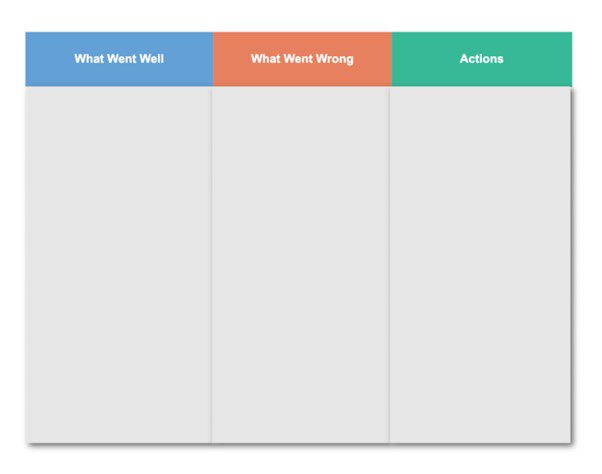
Fresco Traditional Retrospective
Fresco Traditional Retrospective’s Pros
- Contains routines, procedures, and general organizational factors.
- Allows you to choose a ready-made board and modify it or start making one from scratch.
- Features a task-based interface that makes it easy to locate objects that belong to various groups.
Fresco Traditional Retrospective’s Cons
- The free version has limited features and editable boards.
Pricing: Free to $15 per month
Agile Sprint Events Template by ClickUp
ClickUp’s Agile Sprint Events Template is useful for Agile teams using the Agile Scrum technique since it streamlines the documentation of meeting minutes, decisions, and events. Teams can record who they met with, what they discussed, how long the meeting lasted, and who was there. Sprint Planning, Agile Sprint Events, and the Daily Standup are the three sections included in the template. You can also sync up your operations more efficiently by incorporating this template with your current set of tools.
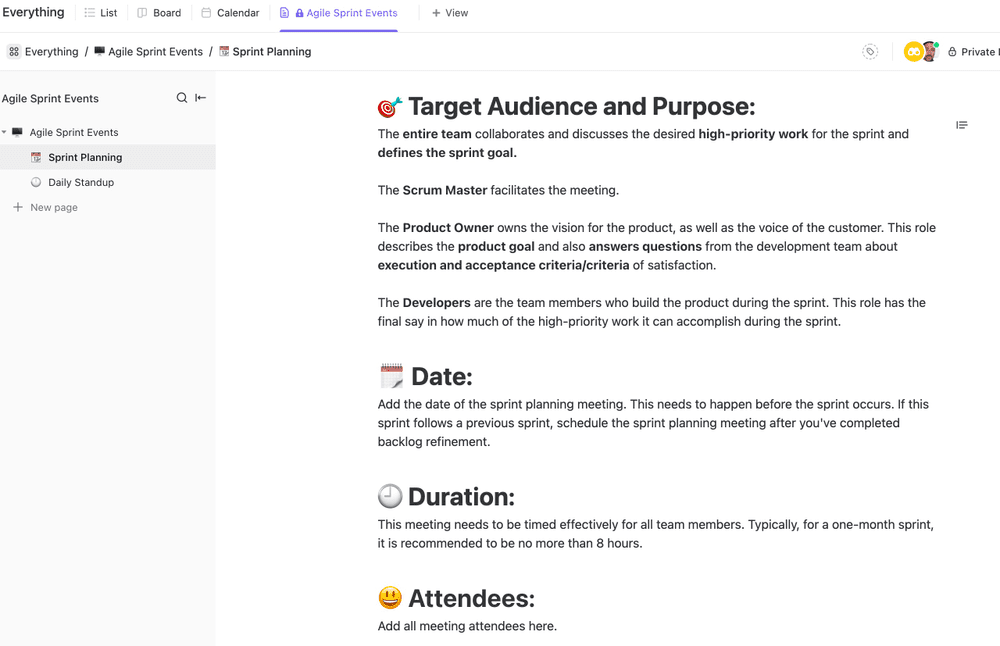
Agile Sprint Events Template by ClickUp
Agile Sprint Events Template by ClickUp’s Pros
- Aids in getting teams off to a running start while meeting.
- Equip your Agile team with a strategy for organizing and bettering their Sprints.
- To generate the next iteration, you can add as many tasks as you want and rearrange them in priority order.
Agile Sprint Events Template by ClickUp’s Cons
- Requires a paid version to use this template.
Pricing: Free to $5 per month
Lessons Learned
A fantastic resource for project management in the long run, the Lessons Learned template offers teams a straightforward method for documenting lessons learned. It encourages a positive outlook since it records successes and setbacks for future use in similar endeavors.
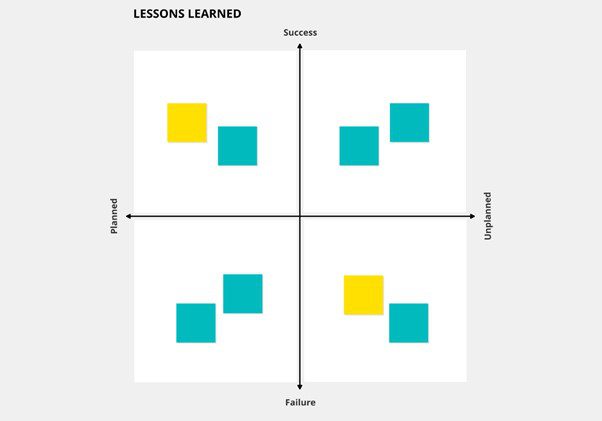
Lessons Learned
Lessons Learned’s Pros
- Put a color next to each column heading, such as “Technology” in red, “People” in blue, and “Management” in green.
- Allows you to send your team members a link to the board.
- You can talk about each idea and figure out its origin, effects, and potential solutions
Lessons Learned’s Cons
- It cannot be downloaded to your local storage.
Pricing: Free to $6 per month
Scrum Retrospective Meeting on Google Sheets
Scrum Retrospective Meeting is a Google Sheets template that helps teams evaluate their performance and identify areas for improvement. With this template, teams can use collaborative note-taking and task creation to better incorporate prior experiences into future preparations. The flexibility of this template is particularly noteworthy. The fact that data is openly distributed also makes it easier for everyone to agree on the fundamentals.
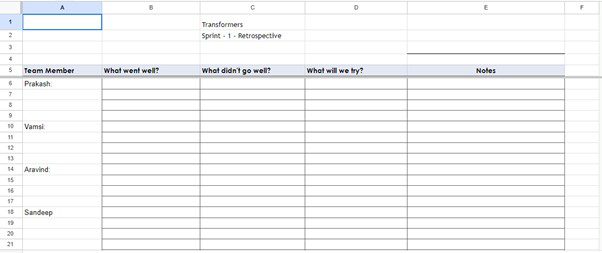
Scrum Retrospective Meeting on Google Sheets
Scrum Retrospective Meeting on Google Sheets’s Pros
- The template is readily adaptable to the team’s strategy.
- This template may be linked to your organization’s workflow tools.
- Changes the way your team works on tasks and makes everyone more productive.
Scrum Retrospective Meeting on Google Sheets’s Cons
- Does not include boards.
Pricing: Free to use
Sailboat Retrospective
Sailboat Retrospective is a humorous and simple method for improving the team’s feedback loop on what worked and what slowed them down during the current sprint. Following the retrospective, the team discusses and settles the necessary actions for the next sprint to make progress. Team members may vote on the topic(s) they feel deserve the most attention. It can be moving the team ahead, and they’ll want to keep doing them, or it could be things holding them back or posing new dangers.
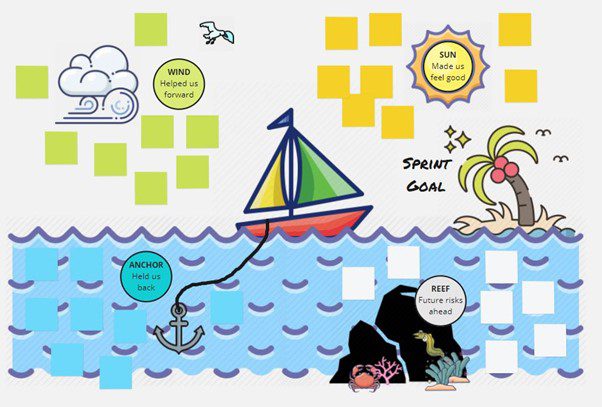
Sailboat Retrospective
Sailboat Retrospective’s Pros
- Allows you to detail all the obstacles preventing your squad from reaching its sprint objective.
- The Reef in the template represents potential risks that might undermine sprint progress.
- Assists the team in establishing the sprint objective they have worked toward daily during the sprint.
Sailboat Retrospective’s Cons
- Requires a sign-up to Miro.
Pricing: Free to use
How Do You Write an Agile Retrospective?
There are a few vital steps to take while writing an Agile retrospective. The first step in conducting a successful retrospective is establishing its parameters and goals. Determine the iteration or project that will be examined and the desired results for the retrospective. When this is in place, the team can execute surveys, feedback forms, and in-depth talks to get insight into their most recent work processes. The next step for writing the Agile retrospectives is for the group to examine the information and pinpoint problem areas. Finding patterns or trends in the data is necessary, as may the discovery of formerly unrecognized difficulties.
Afterward, the group can begin formulating strategies to deal with the issues. These action plans must be concrete, quantifiable, and attainable, with definite deadlines and individual responsibilities. Once done, you need to go back on the retrospective process and see if you might have done anything differently. Following this, the team’s capacity for continual development and innovation may be further enhanced for future retrospectives.
Final Thought
Conducting retrospectives is essential for Agile teams to outline the objectives of their sprint, the potential risks, and the previous mistakes. It helps the project managers, stakeholders, and others understand their positions. To do a proper retrospective, you need an Agile Retrospective Template to avoid missing anything. If your team lacks one, you can choose from the templates discussed in this article. Moreover, we encourage sharing your questions or experiences on agile retrospective templates in the comments.

